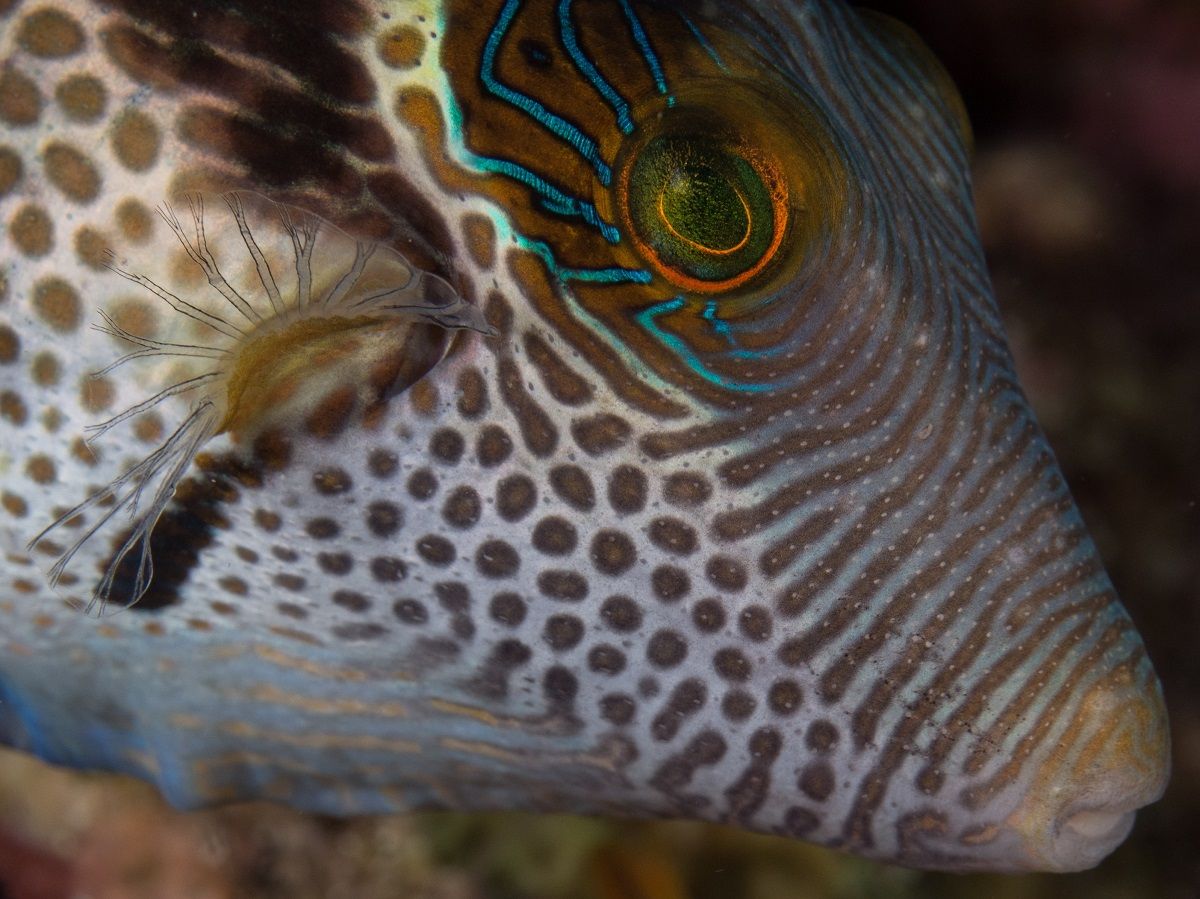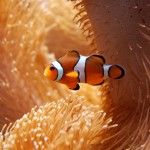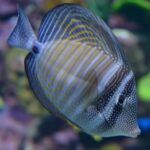The majority of saltwater aquarium pufferfish are too large for the average home aquarium, easily growing to a foot in length or even more. Luckily, though, there are still options for those that don’t have the option of installing a several hundred-gallon aquarium in their home. Sharpnose puffers from the genus Canthigaster stay much smaller and still have all that puffer personality!
Let’s go into caring for the Valentini puffer, one of the more well-known sharpnose puffers.
| Name (Common, Scientific) | Valentini puffer, black saddled toby, Valentin’s sharpnose puffer, Valentini saddle pufffer, canthigaster valentini |
| Minimum tank size | 30 gallons |
| Minimum group size | 1 |
| Temperature | 72-78 °F |
| Salinity | 1.020-1.025 |
| pH | 8.1-8.4 |
| Difficulty level | Intermediate |
Valentini puffer description & natural habitat
Description
Pufferfish from the genus Canthigaster are also known as saddle or toby puffers, but we think their most appropriate common name is sharpnose puffers. Like the other members of this species, the Valentini puffer has an elongated, beak-like snout.
At a maximum size of around 4”, these are definitely not the largest marine puffers out there. That doesn’t mean, however, that they’re not among the most striking ones!
The Valentini puffer features a cream base color with faded spotting and a yellow tail fin. They also sport dark brown vertical markings on the body that are broadest on the back: the ‘saddle’ they are also named for.
Like other pufferfish, this one is toxic. The neurotoxin called tetrodotoxin found in their tissues is more powerful than cyanide and produced by symbiotic bacteria like Pseudomonas and Vibrio. We figure you weren’t going to try to eat your Valentini puffer, but consider this your extra warning!
Natural habitat
Canthigaster valentini has a pretty wide natural range. It’s found in the Indian Ocean, as far west as the Red Sea and all the way east to the outlying islands past Australia. Here, it inhabits coral reefs with a depth of up to 55 meters.
In the wild, the Valentini puffer has developed a special relationship with an almost identical-looking copycat. Its name is Paraluteres prionurus, also known as the blacksaddle filefish. The two species shoal together, giving not just safety in numbers but also an added advantage for the filefish: puffers are toxic and generally avoided by predators, so hanging around them offers an extra layer of safety.
Did you know? Like other pufferfish, the Valentini puffer has the ability to puff themselves up to avoid being eaten. In order to do so, they gulp large amounts of water when startled or approached by a predator. They can stay puffed for up to 10 minutes.
Make sure never to take your puffer out of the water, because if it gulps air, it may not survive.

Valentini puffer (Canthigaster valentini) aquarium
Although you don’t need a massive tank to sustain a Valentini puffer, you do need to count on providing at least 30 gallons of space, preferably more.
The aquarium should provide plenty of hiding places, nooks and crannies. Pristine water quality is important, as these scaleless fish are quite sensitive to fluctuations. Other than that, standard marine water values (as displayed in the chart above) should work just fine.
Valentini puffer (Canthigaster valentini) compatibility
The Valentini puffer is an omnivore that won’t be able to take down large prey with its snout-like nose. It should be safe to keep with a relatively wide range of other fish as long as you avoid species with long and flowy fins, which might end up being nipped at.
The same unfortunately doesn’t always go for invertebrates. Although Valentini puffers are not exclusively carnivores, they won’t say no to a tasty shrimp or crab if they can find one. If you do decide to keep a clean-up crew with your Valentini puffer, it might be a good idea to go for cheaper species.
The above also goes for corals. This species is considered reef safe enough by some, while others don’t want to take the risk with an invertebrate eater. Hardy, cheaper corals might be worth a shot, but those who feel uncomfortable risking it might want to stick to fish only with live rock.
As for compatibility with their own kind, Valentini puffers normally form harems that defend a territory together. In the aquarium they can be kept solo or in pairs, but keep in mind that you’ll have to provide plenty of space to keep more than one. Both males and females are known to be territorial!

Valentini puffer (Canthigaster valentini) diet
As with all puffer species, their diet is probably the most challenging aspect of Valentini puffer care. Their diet consists of basically whatever they can pick off the reef: small invertebrates, algae, coral bits and much more. That comical mouth actually harbors a pair of pretty powerful jaws and teeth, which allow the Valentini puffer to crack mollusc shells and scrape off algae with ease.
In the aquarium, the trick is keeping up with those teeth, which never stop growing. You should make sure you provide a crunchy diet to wear them down, or they might grow so long that your puffer ends up unable to eat properly.
To keep your Valentini puffer happy and healthy, offer meaty foods like unshelled shrimp, small aquatic snails and chopped squid. Mix it up with vegetable matter like algae pellets and nori.
Tip: Your Valentini puffer will greatly appreciate it if you don’t clean the tank too deeply. Leave some patches of algae for it to graze on to supplement its diet.
Breeding Valentini puffer
As far as we’re aware, Canthigaster valentini hasn’t been bred by home aquarists yet. It can be difficult to even get them to spawn due to their territorial reactions to their own kind. The only information we could find was a 1987 study that mentions that C. valentini eggs do hatch in the aquarium, but the larvae don’t survive more than 5 days.
In the wild, as mentioned, this species forms harems with one male and multiple females, with the females forming sub-territories within the larger area owned by the male. The puffers usually spawn year-round, during the morning and afternoon. They deposit their eggs on the substrate and then abandon them to return to patrolling their territory. The eggs hatch after around 5 days.
The reason no parental care is needed for Valentini puffer eggs and larvae seems to be that they’re actually toxic, or at least don’t taste very nice. When fish were presented with a tasty meal of C. valentini eggs or babies, they would spit them out, even if they were happily gobbling up eggs from a different species moments earlier! The only exception were other puffers, which are likely at least partially immune to the tetrodotoxin.
All this gives Valentini puffer eggs and larvae a unique advantage. One study, for example, showed that their survival rate is quite a bit higher than that of some other reef fishes, despite the fact that they grow more slowly.
Conclusion
A beautiful marine aquarium with colorful fish like the Valentini puffer truly is a big eyecatcher. If you’re dreaming of your own fish tank, we can help design, build and maintain it. Just contact us here with your ideas!




